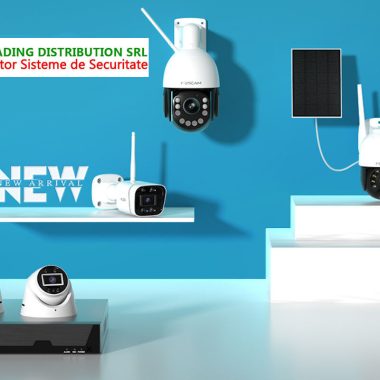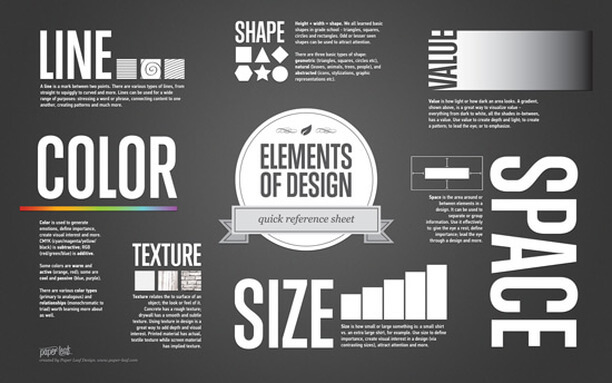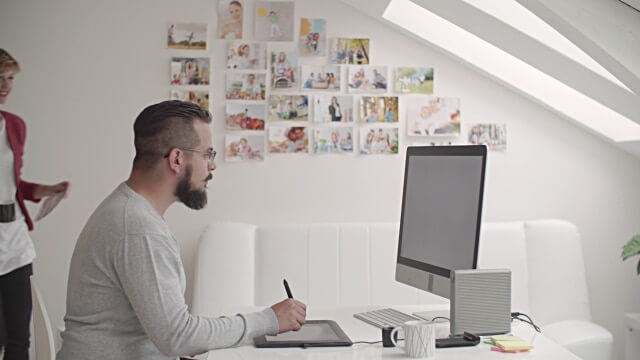If you’ve ever found yourself admiring the aesthetic beauty of a logo, website layout, or advertisement, you might have what it takes to become a graphic designer. In today’s visually driven world, graphic designers are the backbone of branding, digital media, and marketing, playing an essential role in shaping how businesses communicate with their audiences.
But how exactly do you become a graphic designer? What skills are required, and how can you get started in this creative, ever-evolving industry? Let’s break it down step by step.
Understand What Graphic Design Is All About
Before diving into the technical side of things, it’s crucial to have a clear understanding of what graphic design actually entails. In a nutshell, graphic design is the art of combining text and visuals to communicate a message effectively. Whether it’s for print or digital media, graphic designers craft visual content that captures attention, evokes emotions, and drives action.
Designers work on a variety of projects such as:
Logos and branding: Creating symbols and visual elements that define a company’s identity.
Web and app design: Designing user interfaces that are both functional and visually appealing.
Advertising: Designing banners, posters, and social media content for marketing campaigns.
Packaging: Creating attractive designs for product packaging.
Publication design: Designing layouts for magazines, books, and other printed materials.
Graphic designers use their creative talents to solve problems visually, turning abstract ideas into impactful designs. This is why the job demands more than just artistic flair — it requires technical knowledge, problem-solving skills, and a deep understanding of design principles.
Start with the Basics: Education and Training
While many graphic designers are self-taught, having formal education can give you a significant advantage when starting your career. Graphic design is a blend of art and technology, so understanding the principles behind design, such as typography, color theory, and layout, is crucial.
Formal Education Pathways
Bachelor’s Degree: A traditional route many aspiring designers take is earning a bachelor’s degree in graphic design or a related field such as visual arts, digital media, or communication design. This typically takes 3-4 years and provides in-depth training in both the artistic and technical aspects of design.
Associate Degree or Diploma: If a bachelor’s degree feels like too much of a time commitment, a 2-year associate degree or diploma in graphic design might be a more accessible option. These programs often focus on the essentials, giving you a foundation in key design tools and principles without the extended commitment of a full bachelor’s program.
Online Courses: Many people today pursue graphic design without a formal degree by taking advantage of online courses. Websites like Coursera, Udemy, and Skillshare offer a wide range of courses in graphic design basics, software tools, and specialized areas like UX/UI or motion design.
Self-Learning Pathways
If formal education is not for you, don’t worry. Many successful graphic designers are self-taught, relying on online resources, tutorials, and hands-on practice to hone their skills. Here’s how you can get started:
Books and Blogs: Read up on design theory and practice through design-focused books or blogs. Authors like Ellen Lupton, Timothy Samara, and Chip Kidd offer great insights into the world of design.
Tutorials: There are countless free and paid tutorials available online that cover everything from the basics of Adobe Illustrator to advanced techniques in Photoshop. Websites like YouTube, TutsPlus, and Envato offer step-by-step guidance on specific design tasks.
Practice, Practice, Practice: The most important aspect of becoming a graphic designer is continuous practice. As you learn new skills, apply them by creating your own projects, redesigning existing brands, or participating in design challenges.
Master the Essential Graphic Design Tools
One of the most critical components of becoming a graphic designer is mastering the software used in the industry. Here are the key programs you’ll need to become familiar with:
Adobe Photoshop: A must for photo editing, manipulation, and digital art. Photoshop is commonly used for web design, advertising, and image-based design work.
Adobe Illustrator: This is the go-to software for creating vector graphics such as logos, icons, and illustrations. It’s ideal for clean, scalable designs.
Adobe InDesign: InDesign is used for layouts in print and digital publishing, such as creating magazine layouts, brochures, and presentations.
Figma or Sketch: These tools are primarily used for web and app design. If you’re interested in UX/UI design, you’ll likely work with one of these programs.
Learning to use these programs effectively is crucial, as they are the backbone of most design work. While Adobe products are industry-standard, there are also free or more affordable alternatives like Affinity Designer, GIMP, or Canva, which can be good starting points for beginners.
Build a Strong Portfolio
Your portfolio is your most valuable asset as a graphic designer. It showcases your skills, creativity, and problem-solving abilities. Think of it as your resume — but visual.
Tips for Building an Impressive Portfolio:
Show a Range of Work: Include a variety of projects that demonstrate different skills (logo design, web design, illustration, etc.). This will show prospective employers or clients that you’re versatile.
Personal Projects: Don’t wait for a client to give you work — start by creating personal projects. For example, redesign a popular brand’s logo or packaging as a way to show your design process and creativity.
Explain Your Process: Include explanations for each project, detailing your thought process, design decisions, and the challenges you faced. Employers love to see how you approach problems.
Update Regularly: As you gain more experience, be sure to update your portfolio with new and improved work. An outdated portfolio won’t reflect your current abilities.
To make your portfolio easily accessible, consider creating a personal website using platforms like Squarespace, Wix, or WordPress. You can also showcase your work on platforms like Behance or Dribbble.
Develop the Right Soft Skills
While technical skills are essential, graphic design is not just about being able to use software — it’s also about working with people and understanding client needs. Here are some key soft skills that will help you succeed as a graphic designer:
Communication: You need to communicate your ideas effectively to clients, team members, and other stakeholders. This includes the ability to take feedback and revise your work based on client requests.
Time Management: Deadlines are a big part of graphic design work. Being able to manage your time and juggle multiple projects is crucial to maintaining a successful career.
Creativity: Graphic design is all about solving visual problems creatively. The ability to think outside the box and come up with innovative solutions is what will set you apart from others in the field.
Attention to Detail: Small mistakes in typography, alignment, or color can make a design look unprofessional. A keen eye for detail is vital for producing high-quality work.
Network and Build Connections in the Industry
Graphic design is as much about who you know as what you know. Networking can open doors to job opportunities, collaborations, and freelance gigs. Here are a few ways to build connections in the industry:
Attend Design Conferences and Events: Look for design conferences, workshops, or meet-ups in your area or online. These events are a great way to meet other designers and potential clients or employers.
Join Online Communities: Participate in design forums and groups on platforms like Reddit, LinkedIn, and Facebook. Engaging with other designers online can provide valuable feedback, inspiration, and job leads.
Social Media Presence: Use platforms like Instagram, Pinterest, and LinkedIn to showcase your work and connect with other creatives. By sharing your designs and engaging with others, you can expand your network and attract potential clients.
Explore Job Opportunities
Once you feel confident in your skills and have built a solid portfolio, it’s time to look for job opportunities. Here are a few career paths you can explore:
In-House Designer: Many companies hire graphic designers to work full-time on their internal branding, marketing, and design needs.
Agency Work: Design agencies often hire graphic designers to work on a wide range of projects for different clients, offering great experience and exposure to various industries.
Freelancing: Many graphic designers choose the flexibility of freelancing, offering their services to multiple clients on a project basis. Websites like Upwork, Fiverr, and 99designs can help you find freelance gigs.
Becoming a graphic designer is a rewarding journey that blends creativity, technical skill, and problem-solving. Whether you choose to take a formal education route or prefer self-teaching, the key is consistent learning and practice.
By mastering design tools, building an impressive portfolio, and developing both technical and soft skills, you can carve out a successful career in the world of graphic design. Remember, persistence and passion will take you far — so keep learning, stay inspired, and don’t be afraid to take risks in your creative journey!
Stay Updated with Design Trends
The world of design is constantly evolving, and staying current with trends is crucial for maintaining a competitive edge. As technology changes, so do design preferences, tools, and techniques. Here’s how you can keep up:
Follow Design Blogs and Publications: Websites like Creative Bloq, Designmodo, and Smashing Magazine regularly post about the latest trends, techniques, and tools in the design industry. Staying informed will help you anticipate what’s coming and inspire fresh ideas for your work.
Subscribe to Design Newsletters: Weekly or monthly newsletters such as The Design Kids or Designalytics deliver curated content on trends, industry news, and inspiration directly to your inbox.
Join Webinars and Online Workshops: Many designers and industry professionals host webinars or workshops where they share their expertise on the latest trends and best practices. Participating in these can help you learn from experts and stay updated.
Analyze Competitor Designs: Regularly look at what other designers and companies are doing. This can give you insights into popular styles and design approaches that are gaining traction.
Remember, while it’s important to stay on top of trends, always aim to balance trends with timeless design principles. You don’t want your designs to feel outdated within a few months, so learn how to incorporate trends subtly and effectively without compromising longevity.
Experiment with Different Design Niches
Graphic design is a broad field with many specialties. As you advance, consider experimenting with different design areas to see where your passions and talents truly lie. Some niches you might explore include:
Brand Identity Design: Focus on creating logos, color schemes, and typography that define a brand’s identity.
UX/UI Design: Specialize in designing user experiences and interfaces for websites and apps. This requires a mix of design and psychological insight into how users interact with digital products.
Motion Graphics: Motion design combines animation and graphic design to create engaging visual content for videos, advertisements, or digital media.
Illustration: Some designers use their drawing skills to create custom illustrations for various projects, from editorial layouts to product designs.
Packaging Design: If you’re interested in tangible products, packaging design might be a fun niche to explore, as it combines structural design with visual elements to create functional and appealing packaging.
Environmental Design: This field focuses on the design of physical spaces, such as signage, exhibitions, or retail environments, blending graphic design with spatial awareness.
Finding a niche you’re passionate about can make your work feel more rewarding and help you become a sought-after expert in that specific area.
Prepare for Continuous Learning and Growth
Graphic design, like most creative industries, is not static. New tools, techniques, and technologies emerge all the time. To remain competitive, you must embrace lifelong learning. Here’s how to ensure continuous growth:
Take Advanced Courses: Once you’ve mastered the basics, continue advancing your skills by taking specialized courses in fields such as typography, branding, or web design.
Learn New Software: As new design tools emerge, it’s important to stay current with industry-standard software. Programs like Affinity Designer, Procreate, or even 3D design tools like Blender are gaining popularity in certain design sectors.
Seek Feedback and Mentorship: Connect with experienced designers to get feedback on your work or guidance in your career. Critiques help you improve, while mentorship can offer insights into navigating the design industry successfully.
Set Personal Challenges: Challenge yourself regularly with personal projects or by participating in design contests. This keeps your creativity sharp and pushes you to explore new ideas.
Understanding the Business Side of Design
Whether you choose to freelance or work in-house, understanding the business aspects of graphic design is crucial. Here are some key areas to consider:
Pricing Your Work: Learning how to price your design services fairly can be tricky. Research industry standards and consider factors like experience, project scope, and client budget when setting rates. Pricing platforms like Graphic Artists Guild Handbook can offer guidelines.
Contracts and Legal Considerations: If you’re freelancing, always use contracts to outline the terms of your work, including deadlines, deliverables, and payment schedules. A clear contract helps protect both you and your client from potential disputes.
Client Management: Learning how to manage client expectations is key to a successful career. Clear communication, setting realistic timelines, and delivering quality work are critical for building lasting client relationships.
Marketing Yourself: If you’re freelancing or running your own design business, self-promotion is vital. Use social media, portfolio websites, and networking events to market yourself and attract new clients. Invest time in building a strong personal brand that reflects your values and design style.
Prepare for the Challenges
While graphic design is an exciting and rewarding field, it’s not without its challenges. Here are a few obstacles you might encounter and how to overcome them:
Creative Blocks: Every designer experiences creative block at some point. When this happens, take a break, seek inspiration from other art forms, or collaborate with others to spark new ideas.
Client Revisions: Sometimes, clients may not love your initial design, leading to multiple rounds of revisions. Stay patient, open-minded, and willing to collaborate. Remember, the goal is to satisfy the client while maintaining your design integrity.
Tight Deadlines: Design work often comes with time-sensitive projects. Mastering time management and setting realistic deadlines will help you handle the pressure.
Balancing Creativity with Functionality: Sometimes, you’ll have to balance your creative ideas with practical requirements. Learning to compromise while still delivering high-quality work is a valuable skill in this field.
Is Graphic Design Right for You?
Becoming a graphic designer requires a mix of creativity, technical skill, and passion. If you’re someone who loves art, has a keen eye for detail, and enjoys solving problems visually, this career can be incredibly fulfilling.
The path to becoming a graphic designer isn’t linear — some people start with a degree, others are self-taught. What matters most is your dedication to improving, your willingness to experiment, and your ability to adapt to the industry’s ever-changing landscape.
Graphic design offers numerous opportunities for growth, whether through full-time work, freelancing, or even starting your own design agency. By continuously building your skills, networking with other creatives, and staying informed about the latest trends, you’ll be well on your way to establishing a successful career in this exciting and dynamic field.









